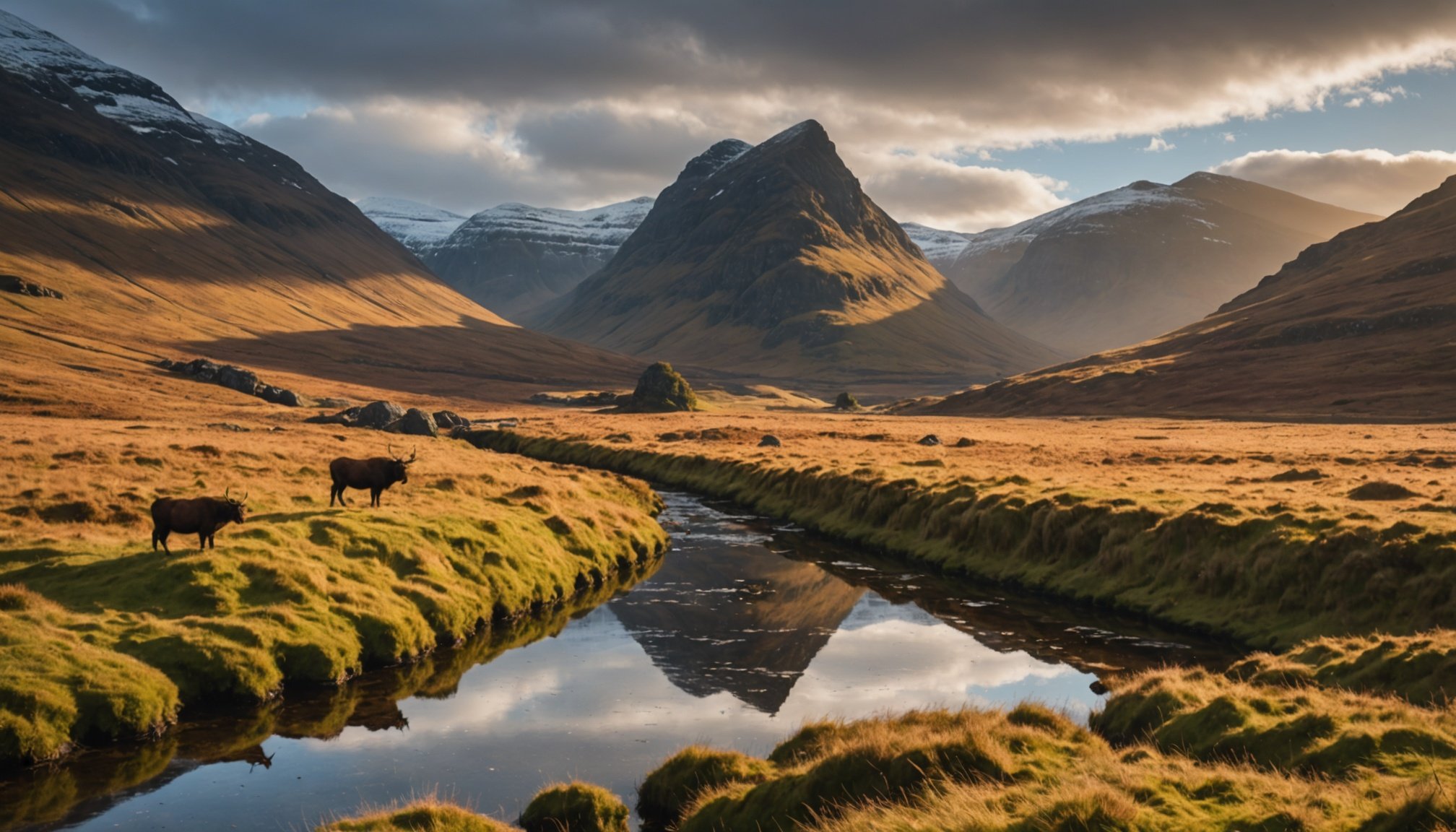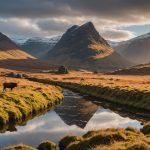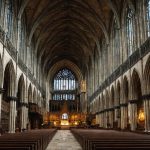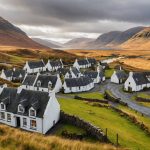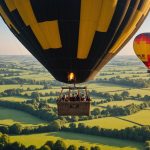Understanding the Scottish Highlands for Wildlife Photography
Exploring the Scottish Highlands offers an unparalleled opportunity for wildlife photography, thanks to its diverse ecosystems. From dense forests and rugged mountains to expansive moorlands, each habitat sustains unique wildlife. This diversity means that photographers are likely to encounter animals such as red deer, golden eagles, and pine martens across different settings.
Understanding animal behavior is pivotal for successful Scottish Highlands wildlife photography. Different species have distinct habits and routines, and being familiar with these can immensely improve photography outcomes. For example, knowing when animals are most active can help ensure that you capture them in their natural behaviors, offering more dynamic and engaging images.
Also to see : Must-Know Insider Tips for a Memorable Trip to the National Museum of Scotland
The landscape features of the Highlands also play a crucial role in wildlife sightings. The terrains offer both challenges and advantages for spotting animals, as certain species might prefer inaccessible areas while others can be found in open sight. By adapting your approach to these landscapes, you increase the likelihood of capturing those elusive moments that define captivating wildlife habitats and landscape photography tips.
Remember, to bring these stunning scenes into focus, patience and adaptation to the changing environments are key, enhancing your chance of witnessing the Highlands’ vibrant wildlife tapestry.
In the same genre : Uncover the Enchanting Villages of the Scottish Highlands: Your Ultimate Guide to Scotland’s Secret Treasures
Essential Photography Techniques for Wildlife
In wildlife photography, employing effective wildlife photography techniques is vital for capturing the beauty of animals in their natural habitats. Recommended camera settings often include using a fast shutter speed to freeze motion, paired with a wide aperture to achieve a soft background and keep the focus on the subject. Adjusting ISO levels is crucial to compensate for varying light conditions but strive for as low as possible to reduce noise.
Composition tips play a significant role in enhancing the storytelling aspect of your images. A widely used technique is the rule of thirds, which adds balance and interest to the photograph. Including environmental elements can also enrich the narrative, offering a glimpse into the subject’s habitat and behaviour.
Patience and timing are paramount in wildlife photography. The most successful shots often result from waiting quietly for extended periods to capture animals in spontaneous, natural actions. Understanding and predicting animal behaviour helps anticipate exciting moments, making meticulous preparation beneficial. Using these techniques and being adaptable enhances the overall quality of wildlife photographs, ensuring results that resonate with viewers. Through thoughtful composition and optimal camera settings, photographers can convey the enchanting essence of wildlife in the Scottish Highlands.
Ideal Locations for Wildlife Photography in the Highlands
Embarking on a wildlife photography adventure in the Scottish Highlands involves identifying the best wildlife photography locations that promise sightings of rich biodiversity. Key spots like the Cairngorms and Isle of Skye stand out for their spectacular scenery and variety of species, making them prime Scottish wildlife hotspots. Each season offers unique wildlife viewing opportunities, with different animals more active at various times of the year. For instance, red deer rutting occurs during autumn, while golden eagles are more visible in spring.
When visiting these regions, understanding seasonal variations is important. It informs both planning and expectations, allowing photographers to align their trips with particular wildlife phenomena. Besides seasonal considerations, accessibility and the need for permits when photographing in protected areas, such as nature reserves, should not be overlooked. Ensuring you have the necessary permissions is crucial for a seamless photography experience.
While essential for capturing memorable moments, the effort involved in reaching some of these locations is part of the adventure. With preparation and permit planning, photographers can focus on capturing the Highland’s majestic wildlife against stunning backdrops, knowing they’re in the right place at the right time.
Recommended Equipment for Wildlife Photography
Capturing the essence of wildlife in the Scottish Highlands requires specialized photography gear. A robust camera is a must, with a focus on fast autofocus systems that can swiftly lock onto elusive animals. This ensures you don’t miss fleeting moments.
Telephoto lenses are indispensable for wildlife photography. Their ability to zoom in on distant subjects allows photographers to capture intimate details without disturbing the animal’s natural behaviour. For those stunning close-ups of a golden eagle or a red deer, lenses with a focal length of at least 300mm are recommended.
Photography accessories like tripods play a pivotal role in stabilizing shots, especially in low-light settings prevalent in the Highlands. Camouflage gear also aids photographers in blending into environments, making them less conspicuous to wildlife. Rain covers are essential to protect your equipment from the Highlands’ unpredictable weather, ensuring your gear remains safe during shoots.
Additional accessories include remote shutter releases to avoid camera shake and memory cards with ample storage for high-resolution images. With the right combination of equipment, photographers are well-prepared to beautifully capture the intricate dance of wildlife in their natural habitats.
Mastering Timing and Lighting in Wildlife Photography
In the pursuit of perfect wildlife photos, understanding photography timing is crucial. The early morning and late afternoon, known as the golden hour, offer ideal conditions for capturing wildlife. During these times, animals are typically more active, and the light is softer, making it favourable for photography. The golden hour provides a unique opportunity to play with light and shadows, enhancing the natural lighting in your images.
Light conditions can dramatically affect your photos. Midday light often results in harsh contrasts and washed-out colours, which can be challenging to balance. Instead, aim for times when the sun is lower in the sky to utilise soft, diffused light that casts fewer shadows and highlights the features of your subjects.
Shooting in various lighting conditions requires adapting your camera settings. For low-light situations, increase the ISO slightly and open the aperture, while maintaining a fast enough shutter speed to freeze motion. Consider using fill-flash sparingly to balance shadows, especially during overcast weather.
Master these natural lighting tips, and align your photography with the rhythms of animal activity, as these efforts will reward you with stunning wildlife images that reflect the majestic beauty unique to the Scottish Highlands.

